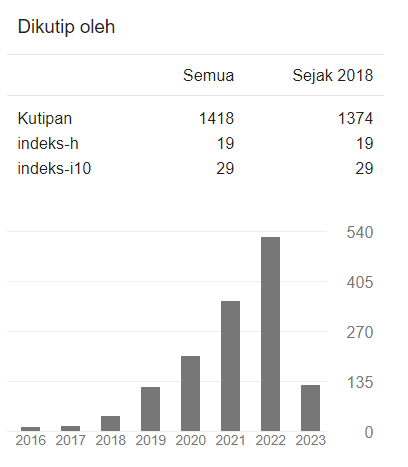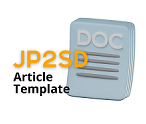PENGEMBANGAN BAHAN AJAR CETAK DALAM BENTUK KOMIK UNTUK SISWA KELAS III SEKOLAH DASAR
DOI:
https://doi.org/10.22219/jp2sd.v6i2.7152Keywords:
Bahan Ajar, KomikAbstract
Tujuan pada penelitian pengembangan yaitu dapat mengahasilkan produk bahan
ajar cetak berbentuk komik yang digunakan pada siswa kelas III SD. Adanya
pengembangan ini yaitu untuk menjawab antara kondisi ideal dengan kondisi di lapangan.
Model pengembangan yang digunakan pada penelitian ini yaitu model Dick, Carey and
Carey yang memiliki tahapan-tahapan sebagai berikut: 1) Mengidentifikasi Tujuan
Pembelajaran, 2) Conduct Instructional Analysis, 3) Analyze Learner and Contexts 4) Write
Performance Objective, 5) Develop Assessment Instrument, 6) Develop Instructional
Stategy 7) Develop and Selecting Instruction, 8) Design and Conduct Formative
Evaluation, 9) Revise Instrument. Penyajian data pada penelitian pengembangan ini validasi
ahli isi/materi diperlukan sebagai suatu bentuk evaluasi terhadap isi/materi serta penyajian
produk yang telah dikembangkan. Berdasarkan perhitungan data angket yang diperoleh dari
validasi ahli materi menunjukkan perolehan sebesar 96 %. Validasi bahasa diperlukan
sebagai evaluasi terhadap bahasa yang digunakan dalam produk yang sudah dikembangkan,
berdasarkan perhitungan data angket yang diperoleh dari validasi ahli bahasa menunjukkan
perolehan sebesar 92%. Validasi desain diperlukan sebagai evaluasi terhadap tampilan
bahan ajar cetak Berdasarkan perhitungan data angket yang diperoleh dari validasi ahli
desain menunjukkan perolehan sebesar 86 %. Hasil belajar siswa mencapai 92%
Downloads
Downloads
Published
Issue
Section
License
Authors who publish with Jurnal Pemikiran dan Pengembangan Sekolah Dasar (JP2SD) agree to the following terms:
- For all articles published in Jurnal Pemikiran dan Pengembangan Sekolah Dasar (JP2SD), copyright is retained by the authors. Authors give permission to the publisher to announce the work with conditions. When the manuscript is accepted for publication, the authors agree to automatic transfer of the publishing right to the publisher.
- Authors retain copyright and grant the journal right of first publication with the work simultaneously licensed under a Creative Commons Attribution-ShareAlike 4.0 International License that allows others to share the work with an acknowledgment of the work's authorship and initial publication in this journal.
- Authors are able to enter into separate, additional contractual arrangements for the non-exclusive distribution of the journal's published version of the work (e.g., post it to an institutional repository or publish it in a book), with an acknowledgment of its initial publication in this journal.
- Authors are permitted and encouraged to post their work online (e.g., in institutional repositories or on their website) prior to and during the submission process, as it can lead to productive exchanges, as well as earlier and greater citation of published work (See The Effect of Open Access).

This work is licensed under a Creative Commons Attribution-ShareAlike 4.0 International License.



















